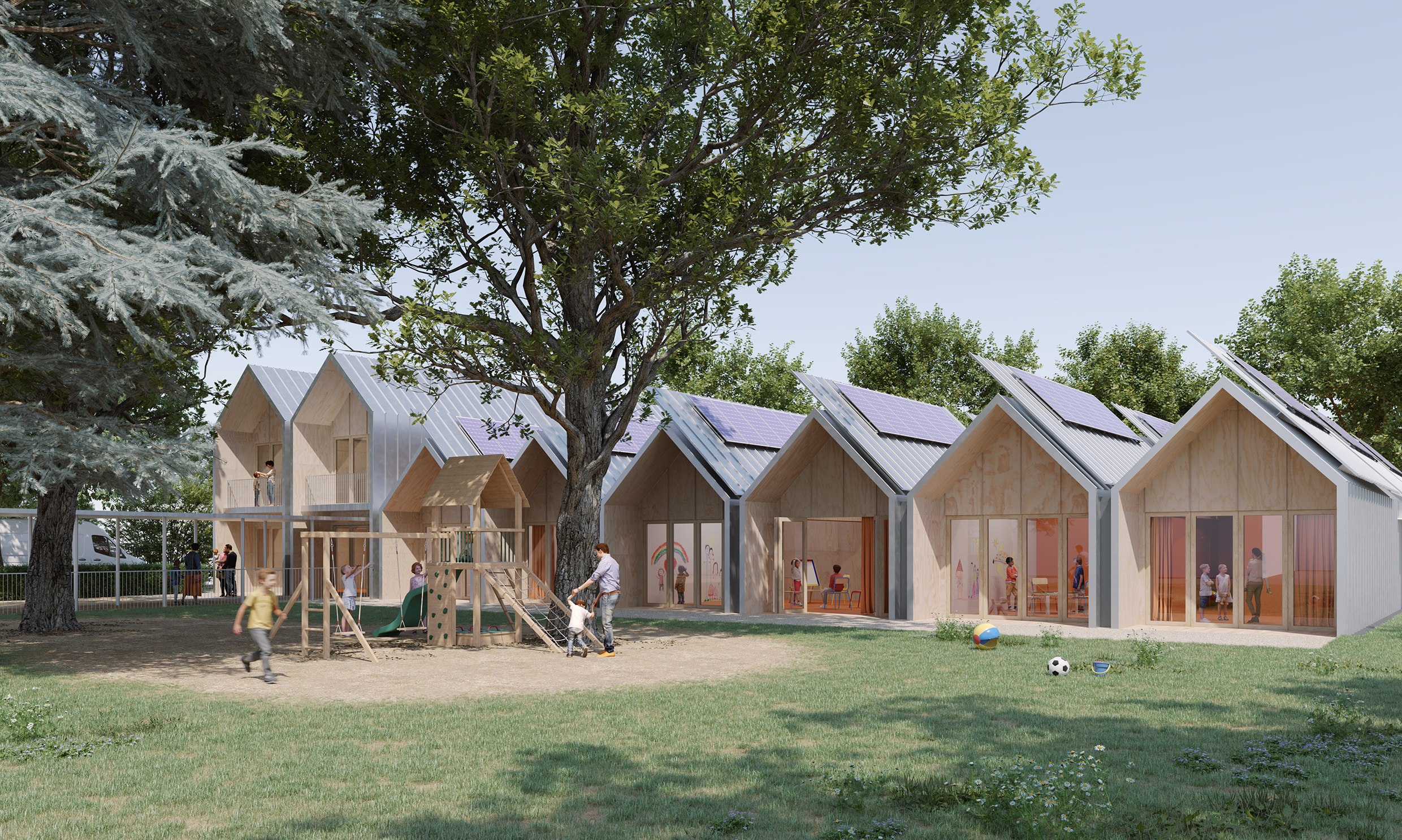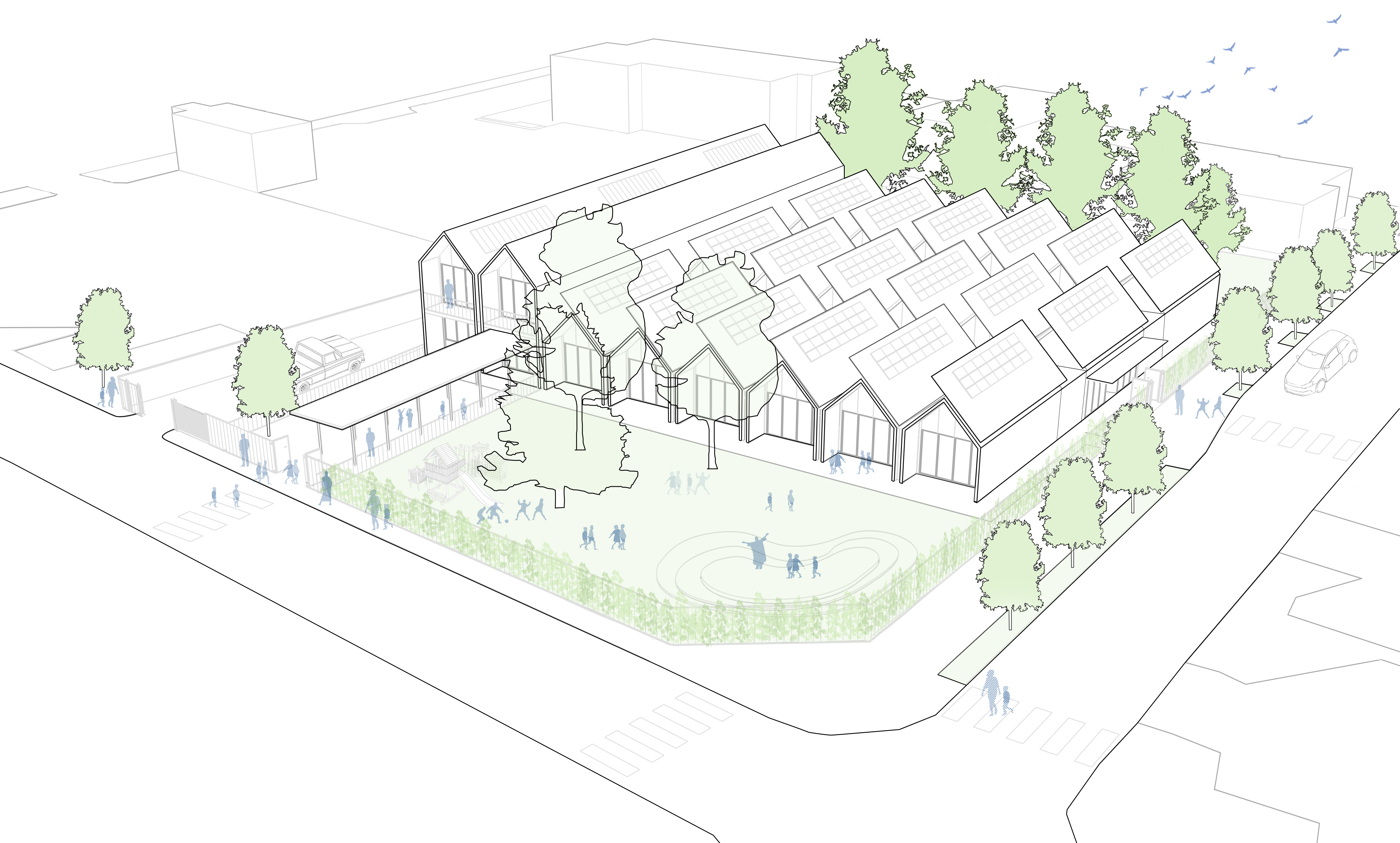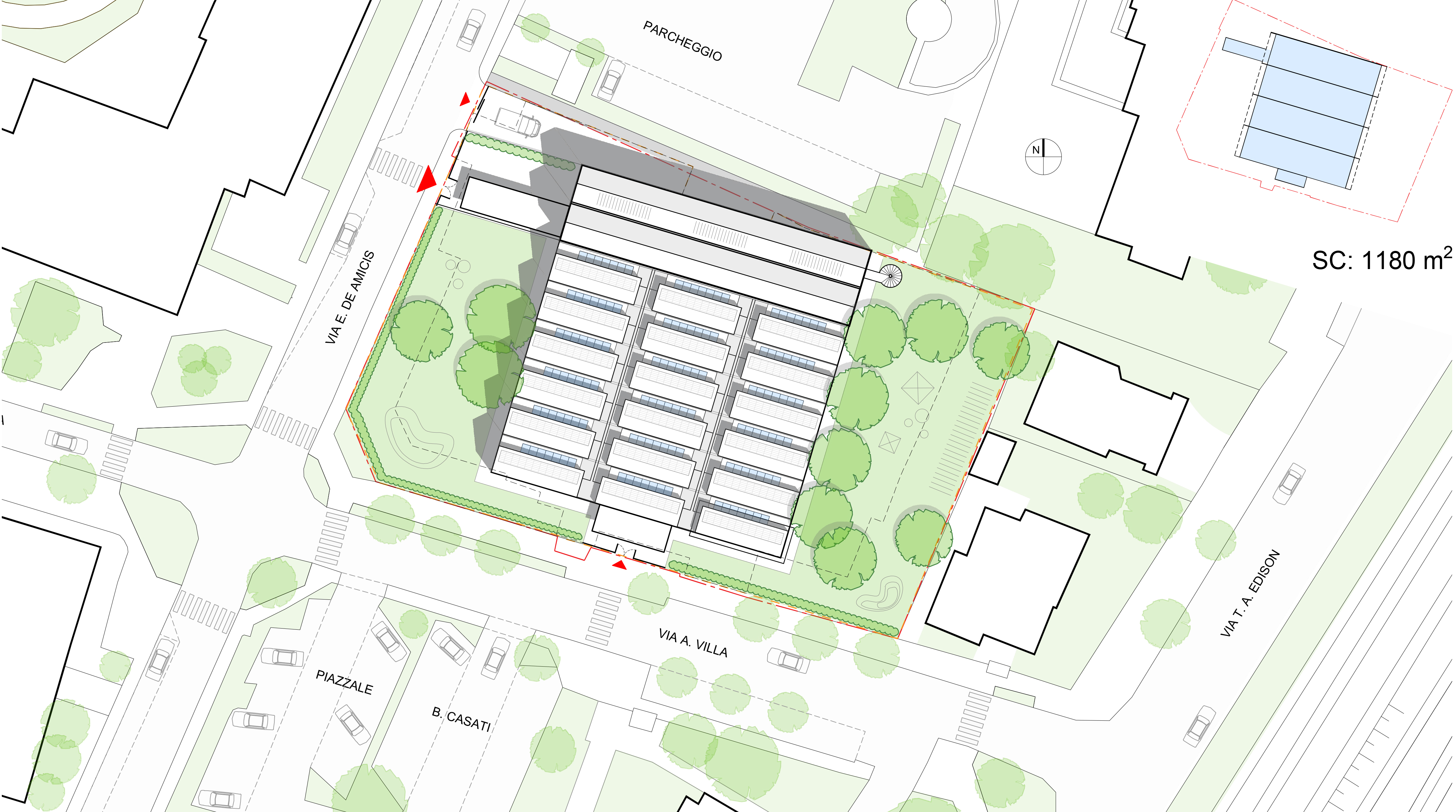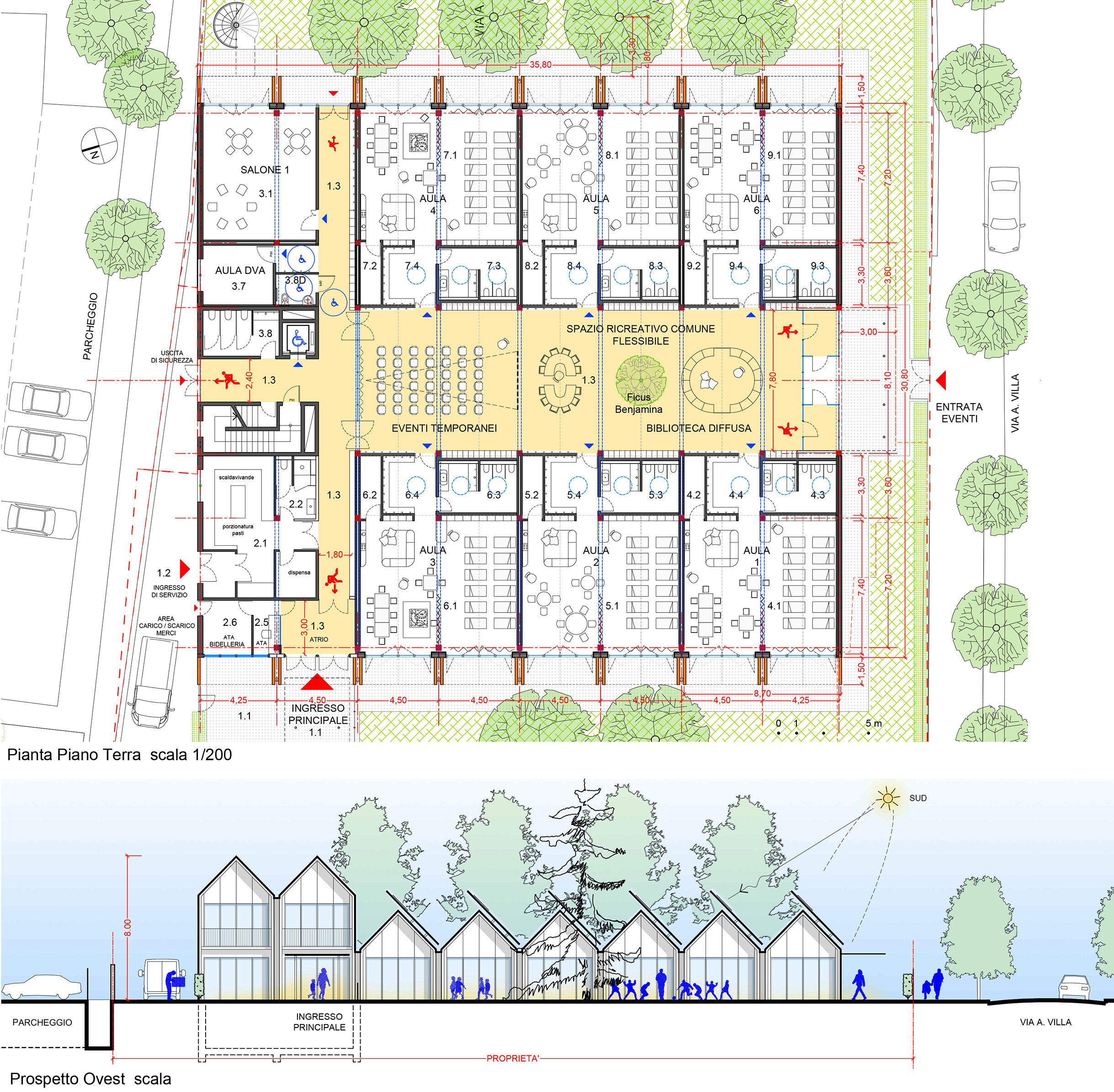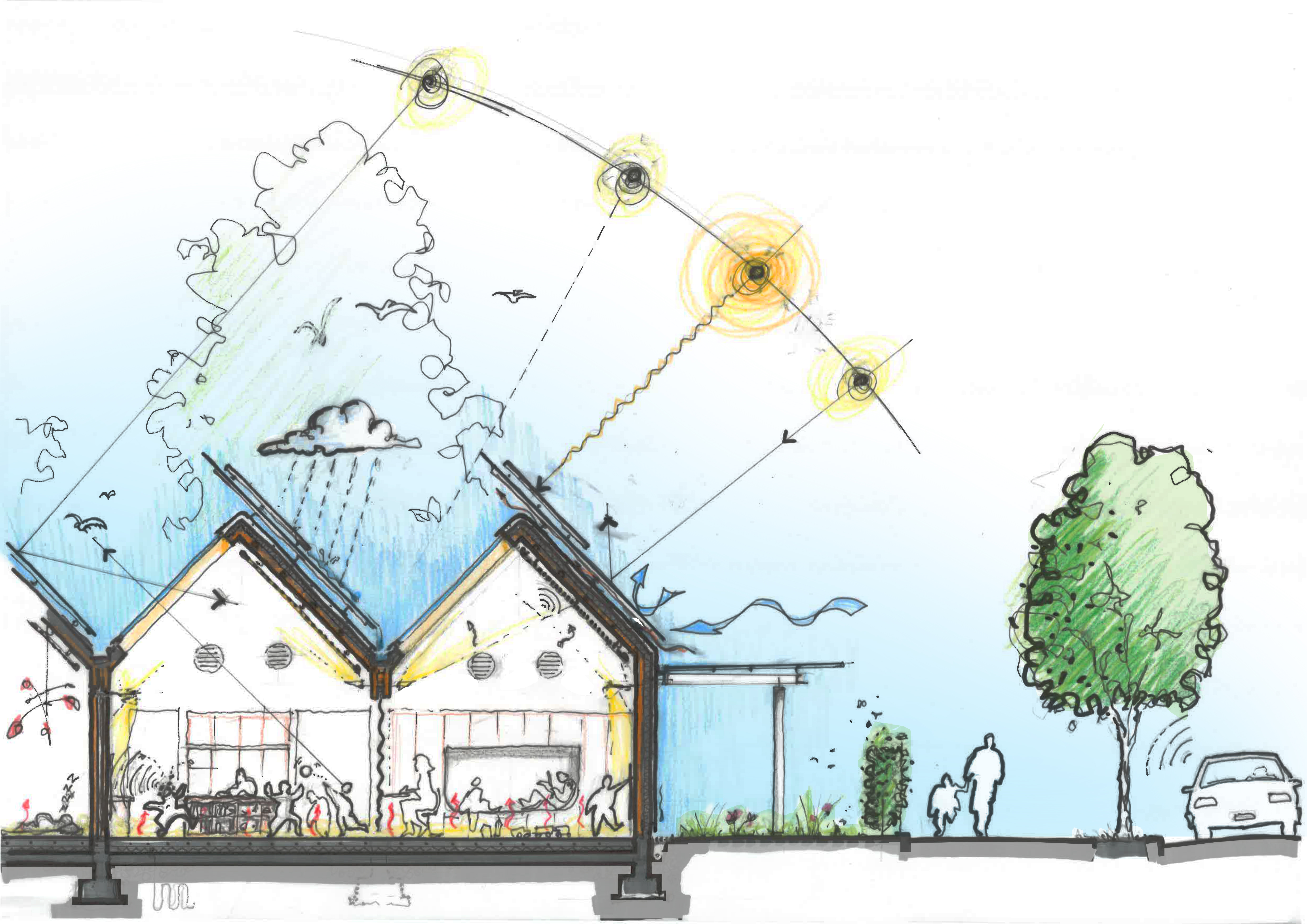- Year 2024
- Location IT - VillaSanta ( Monza Brianza )
- Client Comune di VillaSanta / Provincia di Monza Brianza
- Program
Kindergarten / multifunctional community facility
- Dimensions
1500 m2
- Status Competition
- Design Studio BLU Architecture
- Team
E. Garnaoui (principal), F. Bosco, N.Tran
- Cost ~ 3.5 M €
- Renderings © Studio BLU Architecture
Since the beginning we shared the desire of the Municipality of Villasanta to seize the opportunity of the need to rebuild the Tagliabue nursery school, to create a new a new “place” for the city: a facility that can be used by the entire community.
The new school, in addition to being functional, flexible, sustainable and safe, should be beautiful and above all capable of arousing curiosity and stimulating the creativity of children.
The project approach was to look for the optimal balance between the requested program, the specific conditions of the site (environmental and urban context), the existing constraints and the expected spending budget.
The position of the new building, which occupies the central part of the lot, and its volume meet the needs of:
- safeguard existing tall trees and maximize free green areas.
- consider the best possible orientation with respect to solar exposure.
- consider the neighboring urban context.
The new school complex is largely spread over a single floor, and has a second level in the northern part facing the car park. In this area there is also only the underground level used as technical rooms.
The main axis of the building, which dictates its internal organization and main distribution, is oriented North-East/South-West, with a difference of approximately 16 degrees compared to the North.
This condition is exploited to create the modular roofing with pitched roofs and glass light outlets facing north (shed system). The south-facing pitches have a second light covering which guarantees perfect shading of the north-facing windows and at the same time allows the solar panels to be positioned with the correct inclination. The two facades oriented to the East and West are set back from the volume of the roof, creating protected external spaces 1.5 m deep (loggias).
The main structure is made of wood, and the external cladding with anodized aluminum panels.
The image of the building looks like a small village.
The main structure is made from wood using a CLT system, with large spans in the East-West direction, and according to a constant module of 4.5m center distance in the North-South direction. Each module has a double pitch roof. Partition walls can be created along each 4.5 m module.Where there are no dividing walls, the space can be easily separated by curtains or movable walls on tracks recessed under the main laminated beams, to quickly create smaller spaces.This is the case for example of the typical classroom, which occupies the depth of 2 modules. This modularity also, and above all, characterizes the central space, the focus of the building (illuminated by natural zenithal light), making it very flexible and easily divisible into specific areas of smaller dimensions. Particular attention will be paid to energy saving, sustainability and the production of renewable energy. To meet these criteria the building will be equipped with:- Load-bearing structure and main wooden infills for the entire elevated structure including the dividing walls and the roof casing. - Insulation of the building envelope with natural or recycled materials with high thermal resistance, wooden window frames and high-performance double glazing. - Recovery of rainwater/rainwater on the entire roof. - Renewable energy through the installation of photovoltaic panels and solar thermal panels (glass tubes) for the production of hot water. - Underfloor heating throughout the ground floor. - Shielding of the roofs with inclined panels on which the solar panels can be directly fixed. This "floating" cover, in addition to being the support for the solar panels, protects the underlying waterproof cover, creating natural shading and ventilation of the cavity. - Installation of heat pumps for cooling the building and also for heating the rooms on the first floor. - Possibility of natural ventilation, permitted by the distribution of the spaces on the ground floor. - The possibility of using geothermal energy will be explored. In summer time natural ventilation flow can be provides between the sides facades and the central space skylight openable panels.
